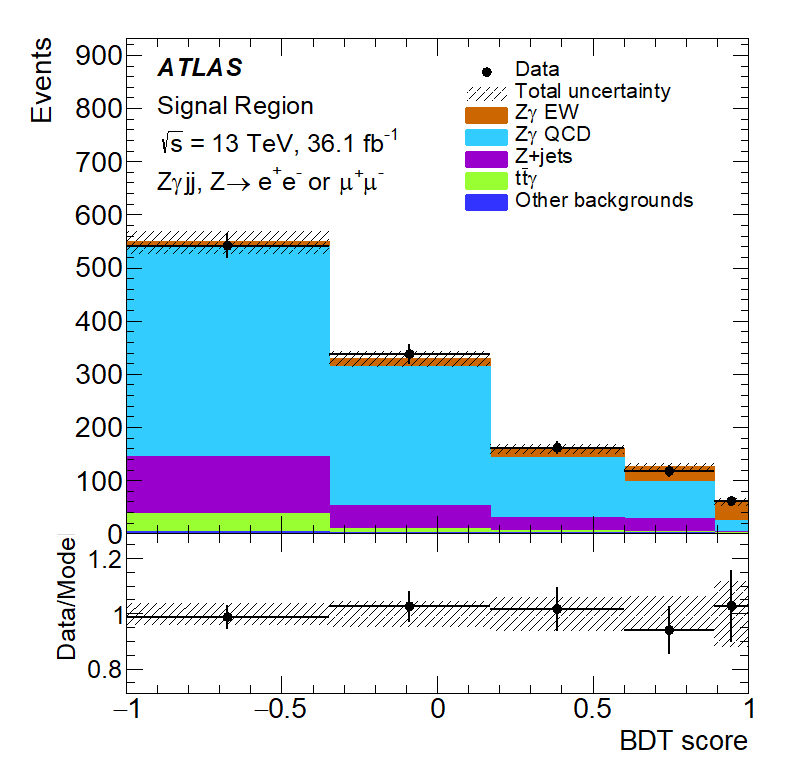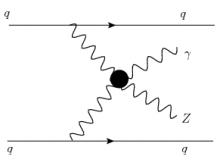Chasing a rare process: the interaction between four bosons
LAPP physicists have played an important role in the discovery of a new measurement of one of the rarest measurable processes with the ATLAS detector at LHC: the interaction between four bosons. This study was published on 28 February 2020 by the Atlas collaboration in the journal Physics Letters B.
Even if predicted theoretically by the Standard Model for more than fifty years, the energy and amount of data from particles collisions needed to produce it is so large that it is only recently possible to detect it. This interaction is particularly interesting because if a new particle unpredicted by the Standard Model would exist, its interaction with the four bosons would significantly modify their production rate (or more precisely, their cross-section). A precise measurement of this cross-section is then crucial to probe the existence of new particles, that would be too heavy to be directly produced during collisions at LHC. This is what ATLAS physicists, and in particular from LAPP, have focused on in this paper.
The four-bosons interaction actually studied is WWZγ, in which two W bosons interact and produce the Z and γ bosons, which are the ones detected in the final state. This process, besides its rarity, has the particularity to be largely contaminated by background, which is made of processes that are well known, have a hundred times larger cross-section and looks like the researched process. To reduce this background, the physicists have used kinematic and topological selections. Indeed, the four-boson scattering is typically accompanied by two hadronic very energetic jets, produced with a large angular separation. However, simple selections are not sufficient to overcome this background. Machine learning techniques are then used to obtain a better performance. After all selections applied in order to preferentially select the signal of interest, only a hundred events remains over two LHC data-taking years !
Using these selected events, the cross-section has been measured, being the most precise published result on this process, to this date. The amount of signal events selected was not enough large to claim an observation of this process (i.e. the probability that the measured signal be in reality background is only a few events for ten millions). Physicists involved in this analysis are now working with a larger amount of data, in order to be able to finally observe this signal, and constrain even more the search for new physics at LHC.
Reference: Phys. Lett. B 803 (2020) 135341



